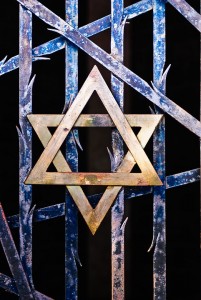 To mark the anniversary of the liberation of the Auschwitz death camp on the 27th of January, the United Nations has recognized this day as International Holocaust Remembrance Day in memory of the people murdered by the Nazi regime and its collaborators. For more information on developing educational programs to instill the memory of the tragedy in future generations to prevent genocide from occurring again please visit The Holocaust and the United Nations Outreach Programme webpage.
To mark the anniversary of the liberation of the Auschwitz death camp on the 27th of January, the United Nations has recognized this day as International Holocaust Remembrance Day in memory of the people murdered by the Nazi regime and its collaborators. For more information on developing educational programs to instill the memory of the tragedy in future generations to prevent genocide from occurring again please visit The Holocaust and the United Nations Outreach Programme webpage.
In recognition of this year’s anniversary, Berghahn would like to showcase a range of Holocaust related titles, including our War and Genocide Series, which reflects a growing interest in the study of war and genocide within the framework of social and cultural history. We are pleased to offer a 25% discount on any of our Print Genocide Studies titles for the next 30 days. At checkout, simply enter the code IHR18.
New and recently-published titles can be found in our latest History Catalogue.
In recognition of the International Holocaust Remembrance Day, Berghahn Journals would like to offer FREE access to related articles* from the Anthropological Journal of European Cultures, European Judaism, Historical Reflections, and the Journal of Educational Media, Memory, and Society until February 3.
Jews and Other Others at the Holocaust Memorial in BerlinIrit DekelAnthropological Journal of European Cultures (Vol. 23, Issue 2)
A Totem and a Taboo: Germans and Jews Re-enacting Aspects of the HolocaustJeremy SchonfieldEuropean Judaism (Vol. 49, Issue 2)
Holocaust Ethics: Difficult Histories and Threatening MemoriesVictor Jeleniewski SeidlerEuropean Judaism (Vol. 47, Issue 1)
From Holocaust Trauma to the Dirty WarFederico FinchelsteinHistorical Reflections (Vol. 41, Issue 3)
Ignored and Misunderstood Aspects of the HolocaustGerhard L. WeinbergHistorical Reflections (Vol. 39, Issue 2)
The Holocaust in the Textbooks and in the History and Citizenship Education Program of QuebecSivane Hirsch and Marie McAndrewJournal of Educational Media, Memory, and Society (Vol. 6, Issue 1)
*Content is exclusively for the user’s individual, personal, non-commercial use. View full terms and conditions. |
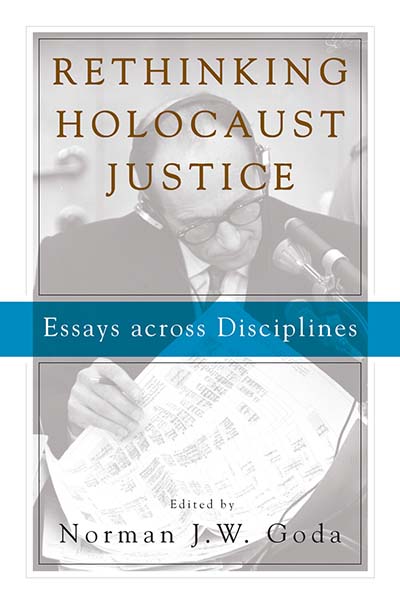 RETHINKING HOLOCAUST JUSTICE
RETHINKING HOLOCAUST JUSTICE
Essays across Disciplines
Edited by Norman J. W. GodaSince the end of World War II, the ongoing efforts aimed at criminal prosecution, restitution, and other forms of justice in the wake of the Holocaust have constituted one of the most significant episodes in the history of human rights and international law. As such, they have attracted sustained attention from historians and legal scholars. This edited collection substantially enlarges the topical and disciplinary scope of this burgeoning field, exploring such varied subjects as literary analysis of Hannah Arendt’s work, the restitution case for Gustav Klimt’s Beethoven Frieze, and the ritualistic aspects of criminal trials.
Read Introduction
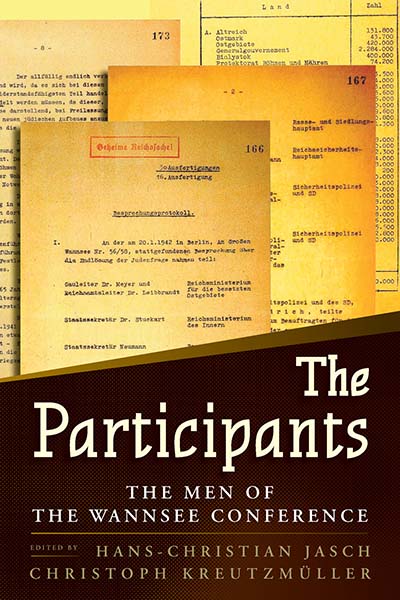 THE PARTICIPANTS
THE PARTICIPANTS
The Men of the Wannsee Conference
Edited by Hans-Christian Jasch and Christoph Kreutzmüller
Translated from the German by Charlotte Kreutzmüller-Hughes and Jane Paulick
On 20 January 1942, fifteen senior German government officials attended a short meeting in Berlin to discuss the deportation and murder of the Jews of Nazi-occupied Europe. Despite lasting less than two hours, the Wannsee Conference is today understood as a signal episode in the history of the Holocaust, exemplifying the labor division and bureaucratization that made the “Final Solution” possible. Yet while the conference itself has been exhaustively researched, many of its attendees remain relatively obscure. Combining accessible prose with scholarly rigor, The Participants presents fascinating profiles of the all-too-human men who implemented some of the most inhuman acts in history.
Read Introduction: The Participants: The Men of the Wannsee Conference
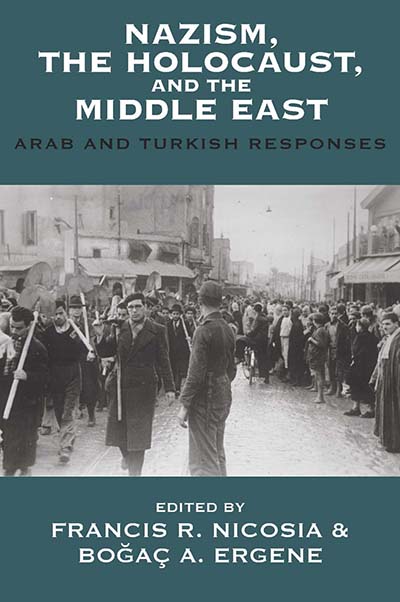 NAZISM, THE HOLOCAUST, AND THE MIDDLE EAST
NAZISM, THE HOLOCAUST, AND THE MIDDLE EAST
Arab and Turkish Responses
Edited by Francis R. Nicosia and Boğaç A. Ergene
Volume 7, Vermont Studies on Nazi Germany and the Holocaust
Given their geographical separation from Europe, ethno-religious and cultural diversity, and subordinate status within the Nazi racial hierarchy, Middle Eastern societies were both hospitable as well as hostile to National Socialist ideology during the 1930s and 1940s. By focusing on Arab and Turkish reactions to German anti-Semitism and the persecution and mass-murder of European Jews during this period, this expansive collection surveys the institutional and popular reception of Nazism in the Middle East and North Africa. It provides nuanced and scholarly yet accessible case studies of the ways in which nationalism, Islam, anti-Semitism, and colonialism intertwined, all while sensitive to the region’s political, cultural, and religious complexities.
 CHILDREN IN THE HOLOCAUST AND ITS AFTERMATH
CHILDREN IN THE HOLOCAUST AND ITS AFTERMATH
Historical and Psychological Studies of the Kestenberg Archive
Edited by Sharon Kangisser Cohen, Eva Fogelman, and Dalia Ofer
The testimonies of individuals who survived the Holocaust as children pose distinct emotional and intellectual challenges for researchers: as now-adult interviewees recall profound childhood experiences of suffering and persecution, they also invoke their own historical awareness and memories of their postwar lives, requiring readers to follow simultaneous, disparate narratives. This interdisciplinary volume brings together historians, psychologists, and other scholars to explore child survivors’ accounts. With a central focus on the Kestenberg Holocaust Child Survivor Archive’s over 1,500 testimonies, it not only enlarges our understanding of the Holocaust empirically but illuminates the methodological, theoretical, and institutional dimensions of this unique form of historical record.
Read Introduction
NEW IN PAPERBACK:
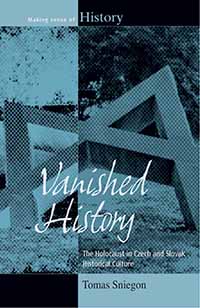 VANISHED HISTORY
VANISHED HISTORY
The Holocaust in Czech and Slovak Historical Culture
Tomas Sniegon
Volume 18, Making Sense of History
“Overall, this is an informative book [that]… may be especially useful for readers interested in the ongoing development of historical narratives in Europe generally, and in the Czech and Slovak Republics in particular.” · Holocaust and Genocide
About 270,000 out of the 360,000 Czech and Slovak casualties of World War II were victims of the Holocaust. Despite these statistics, the Holocaust vanished almost entirely from post-war Czechoslovak, and later Czech and Slovak, historical cultures. The communist dictatorship carried the main responsibility for this disappearance, yet the situation has not changed much since the fall of the communist regime. The main questions of this study are how and why the Holocaust was excluded from the Czech and Slovak history.
Read Introduction: Czechoslovak history’s velvet awakening
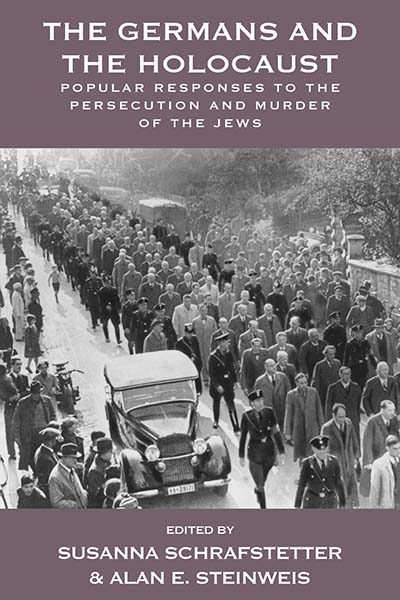 THE GERMANS AND THE HOLOCAUST
THE GERMANS AND THE HOLOCAUST
Popular Responses to the Persecution and Murder of the Jews
Edited by Susanna Schrafstetter and Alan E. Steinweis
Volume 6, Vermont Studies on Nazi Germany and the Holocaust
For decades, historians have debated how and to what extent the Holocaust penetrated the German national consciousness between 1933 and 1945. How much did “ordinary” Germans know about the subjugation and mass murder of the Jews, when did they know it, and how did they respond collectively and as individuals? This compact volume brings together six historical investigations into the subject from leading scholars employing newly accessible and previously underexploited evidence. Ranging from the roots of popular anti-Semitism to the complex motivations of Germans who hid Jews, these studies illuminate some of the most difficult questions in Holocaust historiography, supplemented with an array of fascinating primary source materials.
Read Introduction: The German People and the Holocaust
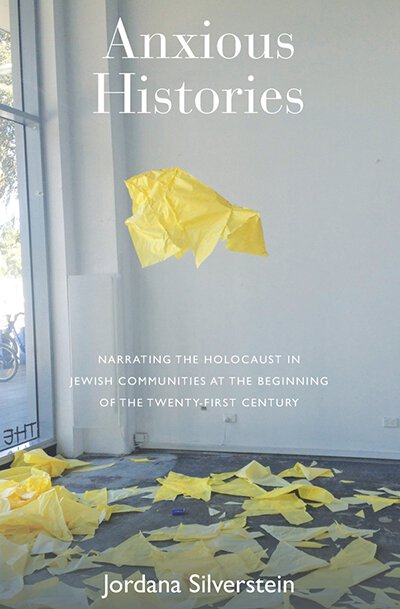
ANXIOUS HISTORIES
Narrating the Holocaust in Jewish Communities at the Beginning of the Twenty-First Century
Jordana Silverstein
“Anxious Histories invites scholars and educators to consider Holocaust education from a series of thought-provoking dimensions. It ought to spur further research to enrich the knowledge base at both the theoretical and practical levels. The book adds to our understanding of the contents and discontents of Holocaust education in Jewish high schools in diaspora contexts at the beginning of the 21st century. Its treatment of a crucial and timely topic in our field renders it a valuable work. For its innovative claims about the roles of both anxiety and assimilation in how Jewish educators teach the Holocaust, it merits our careful attention.” · Journal of Jewish Education
Read Introduction: Holocaust Historiography, Anxiety and the Formulations of a Diasporic Jewishness
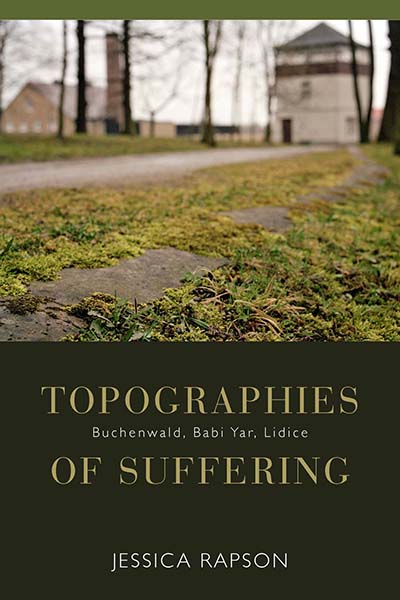
TOPOGRAPHIES OF SUFFERING
Buchenwald, Babi Yar, Lidice
Jessica Rapson
“Jessica Rapson has written a fascinating book… that can be immensely inspiring. One may not agree with her all the time, but this makes her discourse contribution even more valuable.” · H-Soz-Kult
Commentary on memorials to the Holocaust has been plagued with a sense of “monument fatigue”, a feeling that landscape settings and national spaces provide little opportunity for meaningful engagement between present visitors and past victims. This book examines the Holocaust via three sites of murder by the Nazis: the former concentration camp at Buchenwald, Germany; the mass grave at Babi Yar, Ukraine; and the razed village of Lidice, Czech Republic. Bringing together recent scholarship from cultural memory and cultural geography, the author focuses on the way these violent histories are remembered, allowing these sites to emerge as dynamic transcultural landscapes of encounter in which difficult pasts can be represented and comprehended in the present. This leads to an examination of the role of the environment, or, more particularly, the ways in which the natural environment, co-opted in the process of killing, becomes a medium for remembrance.
Read Introduction
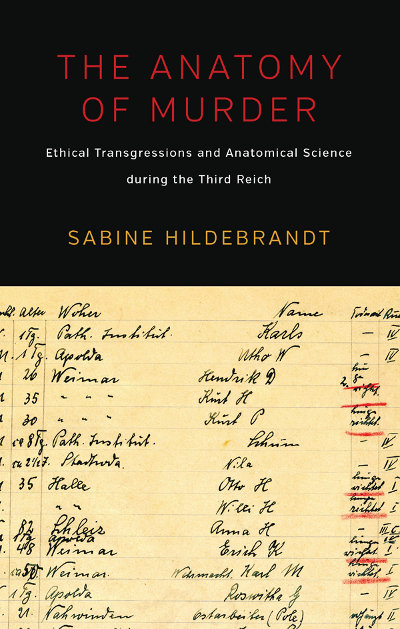 THE ANATOMY OF MURDER
THE ANATOMY OF MURDER
Ethical Transgressions and Anatomical Science during the Third Reich
Sabine Hildebrandt
Foreword by William E. Seidelman
“With this book Sabine Hildebrandt submits an important piece of work to the public, a work that is always absorbing, and needs to be taken very, very seriously. It truly presents a milestone in the research and reappraisal of one of the darkest chapters in the history of medicine. On the basis of thorough new research and a meticulous collection of existing data, it analyzes concisely, objectively, and consistently the position and development of the medical discipline of anatomy during the Third Reich…It would be more than appropriate to include this important book as a standard text in the medical curriculum on the history of medicine. Also, this work can be recommended warmly and without reservations to the general public.” · Annals of Anatomy
Of the many medical specializations to transform themselves during the rise of National Socialism, anatomy has received relatively little attention from historians. While politics and racial laws drove many anatomists from the profession, most who remained joined the Nazi party, and some helped to develop the scientific basis for its racialist dogma. As historian and anatomist Sabine Hildebrandt reveals, however, their complicity with the Nazi state went beyond the merely ideological. They progressed through gradual stages of ethical transgression, turning increasingly to victims of the regime for body procurement, as the traditional model of working with bodies of the deceased gave way, in some cases, to a new paradigm of experimentation with the “future dead.”
Read Introduction
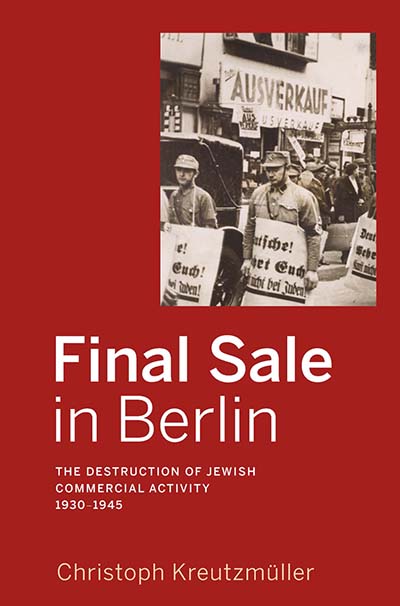 FINAL SALE IN BERLIN
FINAL SALE IN BERLIN
The Destruction of Jewish Commercial Activity, 1930-1945
Christoph Kreutzmüller
Translated from the German by Jane Paulick and Jefferson Chase
“Kreutzmüller’s well written study deals with resistance offered by Berlin’s Jews in the face of Hitler’s legal machinery to destroy their economic selfreliance. The exhaustive research… abundant examples and case studies complement the data, making the book useful for both research and teaching.” · Choice
Before the Nazis took power, Jewish businesspeople in Berlin thrived alongside their non-Jewish neighbors. But Nazi racism changed that, gradually destroying Jewish businesses before murdering the Jews themselves. Reconstructing the fate of more than 8,000 companies, this book offers the first comprehensive analysis of Jewish economic activity and its obliteration. Rather than just examining the steps taken by the persecutors, it also tells the stories of Jewish strategies in countering the effects of persecution. In doing so, this book exposes a fascinating paradox where Berlin, serving as the administrative heart of the Third Reich, was also the site of a dense network for Jewish self-help and assertion.
Read Introduction
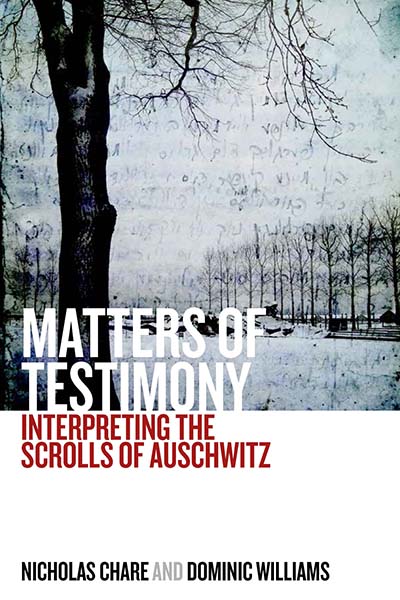 MATTERS OF TESTIMONY
MATTERS OF TESTIMONY
Interpreting the Scrolls of Auschwitz
Nicholas Chare and Dominic Williams
“Chare and Williams have applied a multidisciplinary approach using methods drawn from history, literature, art, psychology, photography, and the study of material culture to analyze these documents, which are often referred to as the Scrolls of Auschwitz, an allusion to the Dead Sea Scrolls. Like the Dead Sea Scrolls, the damaged documents are often very difficult to read and interpret. A valuable contribution to Holocaust scholarship, the field of eyewitness testimony, and the documentation of traumatic events… Highly Recommended.” · Choice
Check out Nicholas Chare and Dominic Williams’s piece on Slate’s The Vault and also Searching for Feelings: The Scrolls of Auschwitz and Son of Saul on the Berghahn Blog.
Read Introduction: Matters of Testimony
War and Genocide Series
“The Berghahn series Studies on War and Genocide has immeasurably enriched the English-language scholarship available to scholars and students of genocide and, in particular, the Holocaust.” · Totalitarian Movements and Political Religions
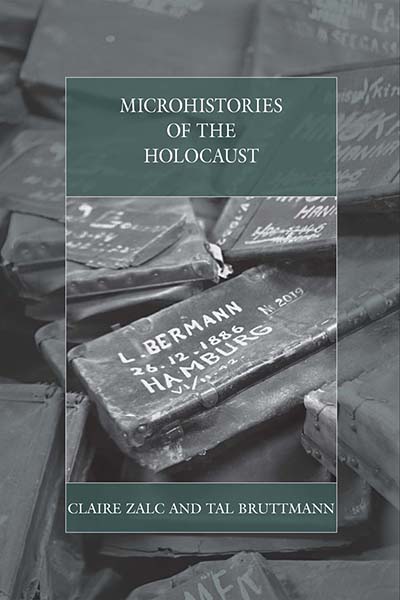 Volume 24
Volume 24
MICROHISTORIES OF THE HOLOCAUST
Edited by Claire Zalc and Tal Bruttmann
How does scale affect our understanding of the Holocaust? In the vastness of its implementation and the sheer amount of death and suffering it produced, the genocide of Europe’s Jews presents special challenges for historians, who have responded with work ranging in scope from the world-historical to the intimate. In particular, recent scholarship has demonstrated a willingness to study the Holocaust at scales as focused as a single neighborhood, family, or perpetrator. This volume brings together an international cast of scholars to reflect on the ongoing microhistorical turn in Holocaust studies, assessing its historiographical pitfalls as well as the distinctive opportunities it affords researchers.
Read Introduction: Towards a Microhistory of the Holocaust
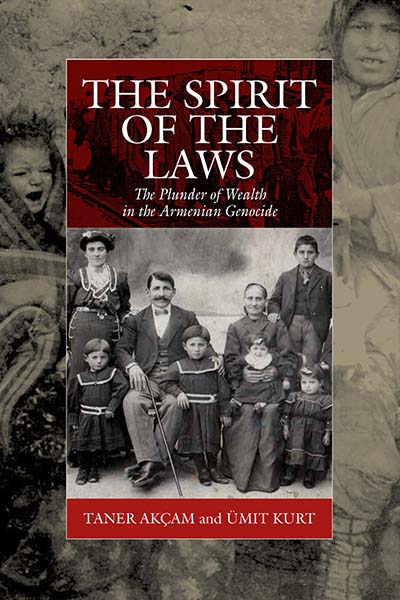 Volume 21 In Paperback
Volume 21 In Paperback
THE SPIRIT OF THE LAWS
The Plunder of Wealth in the Armenian Genocide
Taner Akçam and Umit Kurt
Translated by Aram Arkun
“This book is a valuable addition to filling the gaps of our understanding of genocide and helps readers navigate complex terrain in the case study presented… I recommend this book as a case study to be included in graduate level courses. In addition to its thorough review of the questionable statecraft of genocidal states, it is a reminder of the merits of engaged scholarship. Akçam and Kurt, by sharing their research as an act of solidarity with citizens who continue to challenge state restraints and master narratives based on genocide, make a contribution to the ongoing process of crafting a just society.” · Histoire Sociale/Social History
Read Introduction
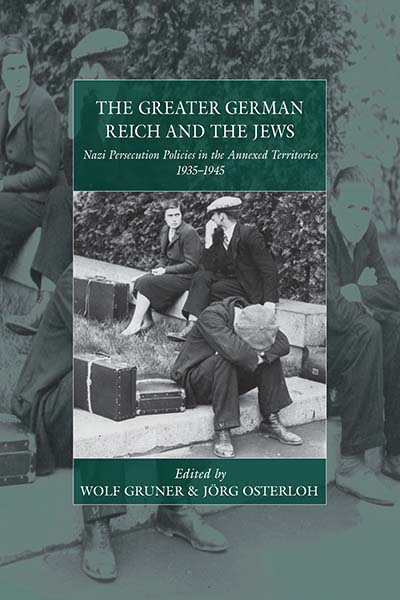 Volume 20 In Paperback
Volume 20 In Paperback
THE GREATER GERMAN REICH AND THE JEWS
Nazi Persecution Policies in the Annexed Territories 1935-1945
Edited by Wolf Gruner and Jörg Osterloh
“Much remains to be learned about the Holocaust in the occupied regions, but this collection helps fill the gap.” · Holocaust and Genocide Studies
Between 1935 and 1940, the Nazis incorporated large portions of Europe into the German Reich. The contributors to this volume analyze the evolving anti-Jewish policies in the annexed territories and their impact on the Jewish population, as well as the attitudes and actions of non-Jews, Germans, and indigenous populations. They demonstrate that diverse anti-Jewish policies developed in the different territories, which in turn affected practices in other regions and even influenced Berlin’s decisions. Having these systematic studies together in one volume enables a comparison – based on the most recent research – between anti-Jewish policies in the areas annexed by the Nazi state. The results of this prizewinning book call into question the common assumption that one central plan for persecution extended across Nazi-occupied Europe, shifting the focus onto differing regional German initiatives and illuminating the cooperation of indigenous institutions.
Read Introduction
For a full list of titles in the series please visit the series webpage.
Berghahn Jounals
German Politics and Society is the only American publication that explores issues in modern Germany from the combined perspectives of the social sciences, history, and cultural studies. The journal provides a forum for critical analysis and debate about politics, history, film, literature, visual arts, and popular culture in contemporary Germany. Every issue includes contributions by renowned scholars commenting on recent books about Germany.
Featured Article:
Latent but Not Less Significant: The Holocaust as an Argumentative Resource in German National Identity Discourse
Eunike Piwoni
 French Politics, Culture & Society
French Politics, Culture & Society
French Politics, Culture & Society explores modern and contemporary France from the perspectives of the social sciences, history, and cultural analysis. It also examines France’s relationship to the larger world, especially Europe, the United States, and the former French Empire.
Featured Article:
Francophonie and Sephardic Difference in the Postwar United States
Nadia Malinovich
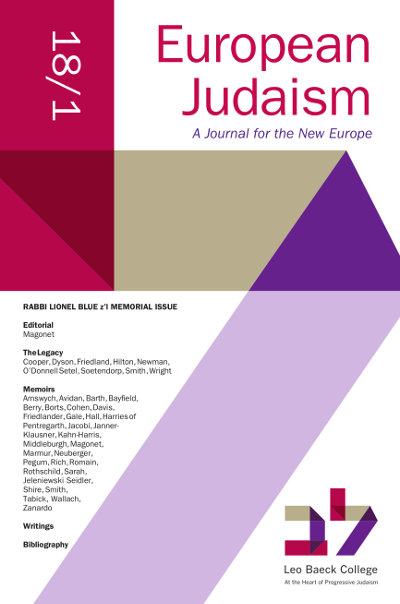 European Judaism
European Judaism
A Journal for the New Europe
For over 40 years, European Judaism has provided a voice for the postwar Jewish world in Europe. It has reflected the different realities of each country and helped to rebuild Jewish consciousness after the Holocaust.
Featured Article:
Fetishizing the Holocaust: Comedy and Transatlantic Connections in Howard Jacobson’s Kalooki Nights
David Brauner
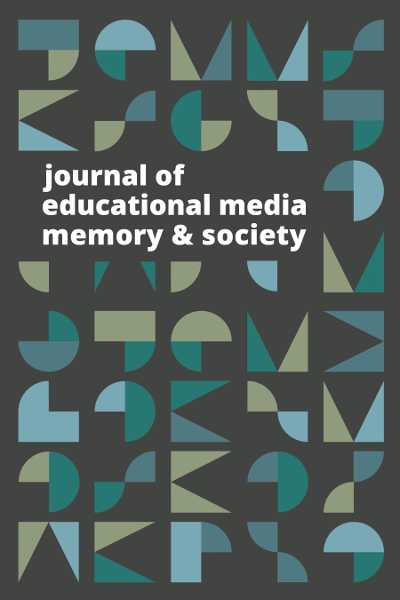 Journal of Educational Media, Memory, and Society
Journal of Educational Media, Memory, and Society
JEMMS explores perceptions of society as constituted and conveyed in processes of learning and educational media. The focus is on various types of texts (such as textbooks, museums, memorials, films) and their institutional, political, social, economic, and cultural contexts.
Featured Article:
The Holocaust in the Textbooks and in the History and Citizenship Education Program of Quebec
Sivane Hirsch and Marie McAndrew

